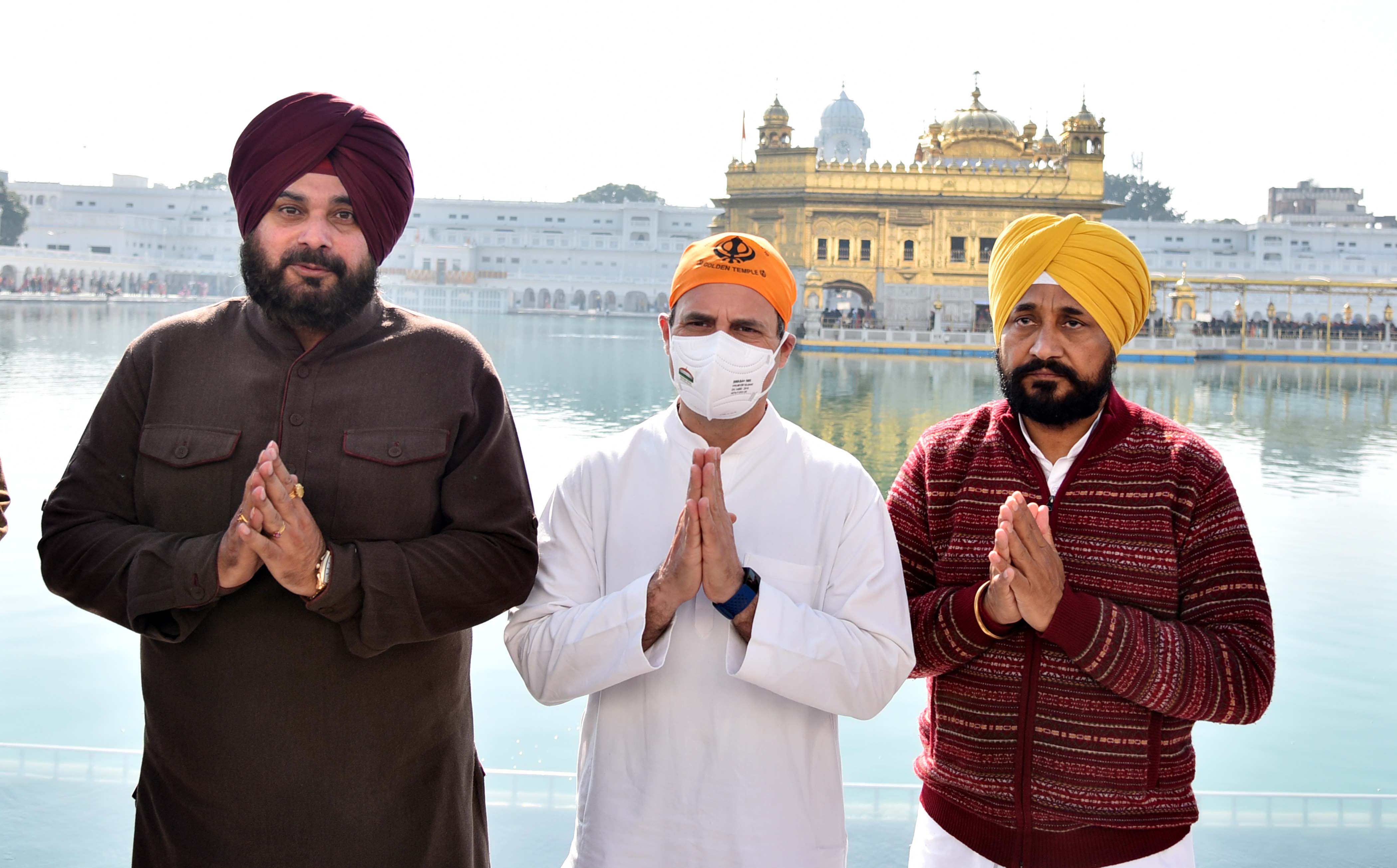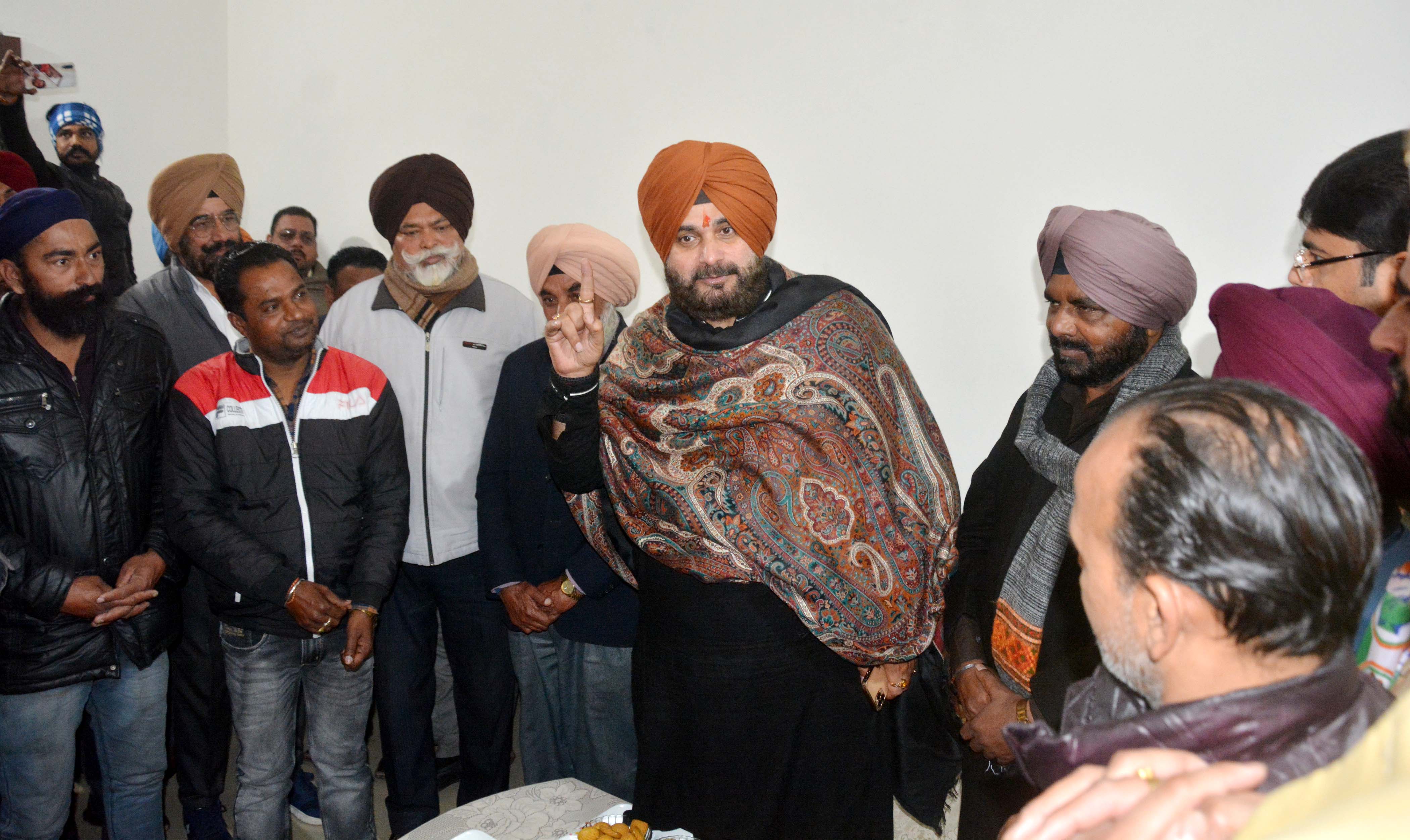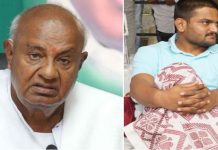
Choosing Channi in Punjab was both a gamble and a surprise the Congress sprung on almost everyone; it was also one that was expected to pay dividends till enfant terrible Sidhu stoked the fire
Punjab Chief Minister Charanjit Singh Channi won hearts when he performed a bhangra; quite like he did when he admitted that he could not believe when the Congress High Command offered him the Chief Minister’s post: “Main rone laga”, I started crying, is what he said at a media conclave, a few months after he was sworn in. That he never aspired to be Chief Minister is a given.
The verdict: a simple, down to earth guy who wears his heart on his sleeve. Pitch him against the maverick Navjot Singh Sidhu and Channi would win hands down.
The uninitiated would ask: Why Channi versus Sidhu? Aren’t they from the same Party? Should they be fighting each other rather than fighting together to defeat a common enemy? Intriguing questions but surely ones that show up the dismal state of what once was India’s grand old Party.
Talking specifically about Punjab, the Congress was in an enviable position particularly after it handpicked Channi to head the state. Political analysts termed it a masterstroke and perhaps an end to the Sidhu jugglery. Channi, by all accounts came as a breath of fresh air, amid the political cauldron in Punjab where the Congress appeared to be a front runner.
Channi is the first Dalit to be Chief Minister of a state dominated by Jat Sikhs. Punjab has not seen a non-Jat Sikh Chief Minister after Giani Zail Singh which was way back in the seventies.
Despite the political dominance of the Jat Sikh community, Dalits comprise 32 percent population as against the Jat Sikhs 20 percent plus.
However, Punjab has always been guided by the ‘only a Sikh can be Punjab’s Chief Minister’ principle: a reasoning that Congress leader Ambica Soni gave when the post was offered to her by Congress scion Rahul Gandhi: “It has been my belief, not from today, but since the past 50 years that the main face or the Chief Minister of Punjab should be a Sikh” she had then said.
Of course choosing Channi was both a gamble and a surprise the Congress sprung on almost everyone; it was also one that was expected to pay dividends till enfant terrible Sidhu stoked the fire.
Navjot Singh Sidhu is perpetually at war: apart from crossing swords with former Chief Minister Amarinder Singh and ensuring his ouster from a Party he had been in much longer than Sidhu himself, he took on Channi too.

While the ostensible reason was his angst over two key appointments made by Channi, the truth is that Sidhu did not want to settle for anything less than being declared the Chief Minister face of the Party.
Yet for whatever noises he may make, he has had to concede defeat not once but twice: when Channi was anointed Chief Minister right under his nose and later when the Congress opted for Channi over Sidhu as the Party’s Chief Ministerial candidate.
The Congress had, after all chosen its “groom” much to Sidhu’s dismay who was itching to ride the wedding mare, as it were: “A baraat cannot be without a bridegroom” he had then said, pushing the Congress to the edge to declare its CM candidate, quite confident that the Congress would not dare upstage him.
But once it did, he had no option but to relent. And how? By hugging Channi and singing paeans of Rahul Gandhi.
It sure was a turnaround because even as he hailed Channi’s selection, he requested “leading light” Rahul Gandhi not to reduce him to a darshani ghoda, a showpiece.
This sure was a climbdown from his fuming at the Congress High Command a few days earlier, for wanting to thrust a Chief Minister who would dance to their tune, quoting a Bollywood song to drive home the point: “Naach meri bulbul to paisa milega.”
The hug notwithstanding, there is a storm brewing within the Congress. The so-called truce is mere optics and once the elections are over, the war will be out in the open.
The arbi ghoda, winning horse, as Sidhu has described himself, may have stepped aside for the time being, but is unlikely to opt-out for good. Even if he is unable to hit the winning stroke, he will fight to the finish.
The electorate, well aware of possible developments, is therefore treading with caution. It would rather bet on a decisive rather than divisive Party.
Equally, it is true that if the Aam Aadmi Party is today a factor to reckon with in Punjab, it is not so much its own doing but more because of the infighting within the Congress.
But why single out Punjab? It is only one chapter in the entire volume of the Congress Tragedy. It is difficult to zero in on when the slide began but once it did it was a steady decline.
At one level, it can be said that the turning point was when the Congress was reduced to a double digit in 2014: the year Modi opened his national account. Then he was at the helm of the electoral battle. Under him, the BJP won 282 seats pushing the Congress down to a mere 44.
Five years down the line, the BJP improved its own performance by adding to its seats, while the Congress struggled with a mere 52 seats. In fact, it didn’t even make the cut to be able to claim the post of the Leader of Opposition.
For those who have closely observed developments in the Congress, concede that this is not about numbers alone. Neither is it about winning or losing the elections but about the frustration that has been building up within; the leadership watching the decline and doing nothing to arrest it.
In this context, Sonia Gandhi’s covert attempt not to let anyone surpass or outshine her son Rahul, is well known.
In 2004, for instance, when the young brigade was voted in, the Congress did not make any move to cash in on their talent.
Over a dozen MPs who sat next to the Congress President Sonia Gandhi were under 40 years of age. They were bright, articulate and raring to go as it were. But they were stopped in their tracks because the intent was not to let the spotlight shift from Rahul Gandhi. Call it mother’s love if you will, but this took a toll on the Party and its prospects.
Power, as they say, is the biggest glue, hence there was not a murmur of dissent. It was an unspoken directive and everyone willingly complied.
However, in 2014 when the Congress lost power, former Union Minister Jayanthi Natarajan trained her guns at Rahul Gandhi saying that she is quitting the Congress because she was forced to act upon “directives” issued by Rahul Gandhi during her stint as a minister.
Others who followed were the likes of G.K.Vasan, Krishna Tirath, both former ministers, and Chaudhary Birender Singh and Datta Meghe among others. However, this was, then, dismissed as a rats deserting a sinking ship syndrome.
Rahul Gandhi continues to be in the eye of a storm. The attack is at two levels: one of being shortchanged and two of personal humiliation.
If Jyotiraditya Scindia and Sachin Pilot are examples of the first, then Ashwani Kumar and Himanta Biswa Sarma fit the bill on the humiliation charge.
In fact, Ashwani Kumar who snapped links with the Congress after 46 years, is on record to state that the resignation was “consistent with (his) dignity”.
Those who quit before Kumar include RPN Singh, Jitin Prasada, P.C. Chacko and Mukul Sangma among others. And who can forget Sarma’s tweet about the Gandhi scion feeding biscuits to Pidi, his dog, when crucial issues concerning Assam were being discussed.
On the other hand, Scindia and Pilot were shortchanged because Rahul Gandhi dithered on giving them their due.
Both are credited with the Congress’ victory but Gandhi backed the rivals. He named Kamalnath and Ashok Gehlot as Chief Ministers of Madhya Pradesh and Rajasthan, respectively.
Scindia swallowed a bitter pill but not Pilot. He extracted his pound of flesh and forced Gandhi to name him Deputy Chief Minister.
More recently, the dismal state of affairs was best summed up by Sibal, following Rahul loyalist Sushmita Dev’s resignation. The Congress, Sibal had then said, was moving on with its “eyes wide shut”.
On her part, Dev had said they were “serving like second class workers in the Party”.
In a Party gripped with Gandhi sycophancy, Sibal also crossed the line when he spearheaded the move to send an open letter to Sonia Gandhi.
Part of G-23, a rebel group within the Congress, Sibal, along with Ghulam Nabi Azad, Anand Sharma and others, demanded a full time President, elections right up to the Congress Working Committee and an overhaul of the Congress Party.
Decode this and it means move over Gandhis and make place for leaders other than the family to take charge. A tall order particularly in the context of the Congress.
It may be recalled that Sonia Gandhi has been functioning as interim President since August last year following Rahul Gandhi’s resignation.
Disenchantment within and a large-scale exodus are taking a toll on the Congress. It seems to be grappling with an enemy within, rather than the one outside. Rahul Gandhi may appear to be taking on Prime Minister Narendra Modi with his one-liners or fiery speeches in Parliament but he has little to show on the ground.
Numbers notwithstanding, the Congress still remains the only Opposition Party with a pan- India presence. Therefore, it needs to lead from the front. It cannot be allowed to disintegrate simply because one family refuses to cede space.
And it is here that the Gandhi triumvirate comes in: the mother and her two kids, who seem to be jeopardizing the political future of hundreds and thousands who have given their sweat and blood for the Party; the triumvirate that is unwilling to give up personal ambition for a larger good; or accept anyone challenging their position or entitlement.
The writing on the wall may be clear but the Gandhis do not wish to decipher the alphabet or come to terms with the fact that they are not bigger than the Party.












